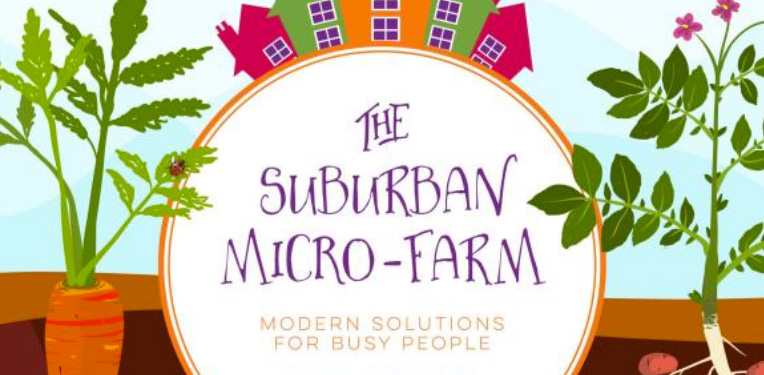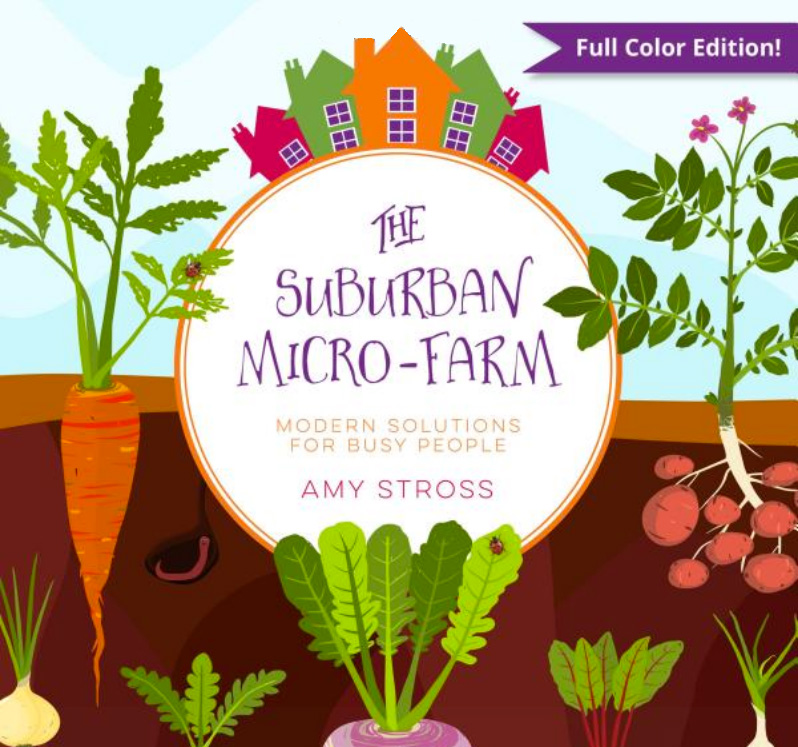I read this book last week and was quite impressed.
Amy and I share a similar approach to gardening. As I read I thought, “I could have written this book!”
So of course, I think it’s great.
You can read my complete thoughts in an in-depth review I wrote for Mother Earth News:
Excerpt:
A few years ago, Brett Markham’s very popular book Mini Farming: Self-Sufficiency on 1/4 Acre opened a new sub-genre of gardening titles. When I got the chance to check out Stross’s book, I at first wondered if she would cover new ground or if this would be another take on Markham’s intensive backyard gardening approach. I was pleasantly surprised to find that she has a unique perspective of her own — and she covers material that some authors gloss over.
Myth Busting Suburban Food Production
She also covers the myths that hold many back from gardening, and even makes a good argument for the suburbs:
“…some people today think of the suburbs as an embarrassment, with water-hoarding lawns and a lack of car-centric alternatives, so they choose to live elsewhere. I once made that decision for myself and enjoyed my urban apartment within walking distance of amenities and no lawn to worry about. It was a dandy time! However, if we realize the enormous potential the suburbs have to change overall consumption habits and transform land use practices, the suburbs could end up being just the solution our cities—and perhaps even civilization—need. After all, out-lying villages have performed this function in ancient cities of the world throughout history. All we need are some pioneering micro-farmers!”
I completely agree. The push towards putting us all in little apartments and big, soul-less cities rankles me. I’m a product of suburban South Florida and I can tell you: There are a lot of people growing food there and it wasn’t a bad place to grow up. It’s not all a wasteland. Grow where you’re planted.
Another myth she mentions is the myth that a small space – a small amount of food, noting that “in actuality, it doesn’t take much space to grow a lot of food–only creativity.”
A case in point: This last season my 10-year-old son grew 50 pounds of ginger roots in a roughly 5-by-8-foot bed. My eight-year-old planted a similar sized bed and managed to grow 68 pounds of winter squash on one vine, plus a few handfuls of cherry tomatoes and multiple African yam roots. The square vines sprawled up and over the fence and into a little citrus tree which was soon decorated with huge, melon-like squash.
You can grow up, you can grow in unused strips, you can grow in buckets, bathtubs, along the sidewalk, even under trees. It just takes creativity, and as Stross has shown, even 1/10 of an acre can give you big results.
Small-scale Gardening with Fruit Trees
Another point Stross makes is one I’ve repeated to my readers again and again. Start gardening on a small scale, learn to win, then expand:
“Plant only what you can manage – if you can’t maintain the existing stuff, why plant more? Gardens can be overwhelming, and that’s why I prioritize keeping what I’ve already planted alive and harvesting what I’ve already planted before I take on new tasks like building more garden beds or planting for the next season.”
Seriously, she’s got it. And this is just one of many points in this book where I found myself nodding along. This observation, for example:
“A fruit tree can be the single-most source of fresh produce for the least amount of space and effort.”
Plant fruit trees and get them established until they can take care of themselves and you’ll reap the benefits for years — and others will into the future. We used to have two pear trees at a previous house. They had been neglected for years yet still bore plenty of fruit. In fact, a neighbor told me that the trees were supposed to have been ‘Bradford’ pears, not fruiting pears, and had been planted on accident. What a happy accident! For the years we lived there we had pear pies and pear butter, we made pear brandy and pears in syrup, pear salsa and pear sauce — plus our children ate the honey-sweet, sun-warmed fruit right from the trees. Now another family is there and still enjoying pears.
Stross is right. It was almost no effort to keep those pears and the amount of fruit they provided was startling. When I got to the portion on growing berries, I thought, “okay, Amy, you’d better mention mulberries… if you miss mulberries I’ll know you’re a no-good poser!”
If you buy the book at one of my links, Amazon gives me a small percentage. It’s a nice piece of inspiration for anyone living in the suburbs and longing for bigger and better things.


